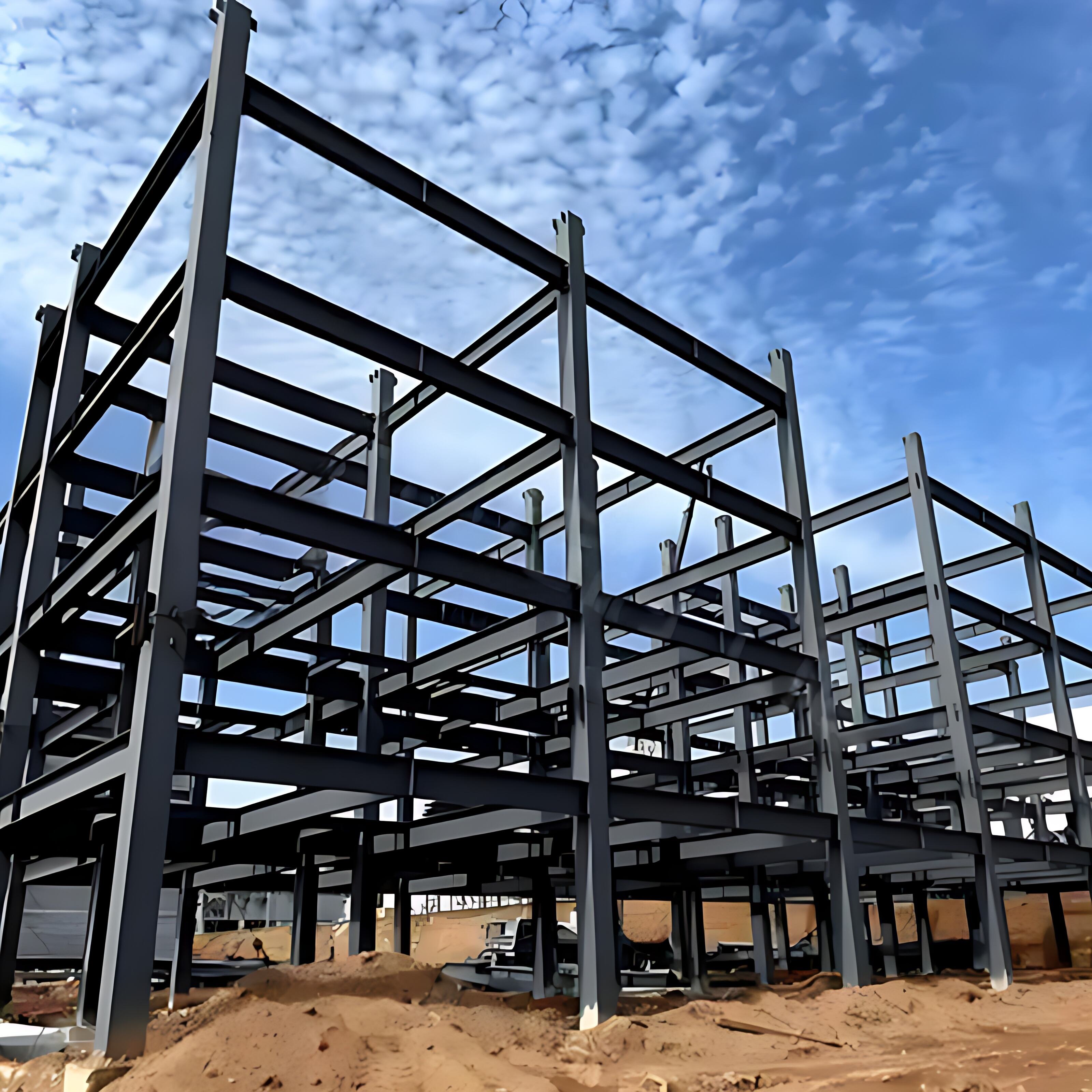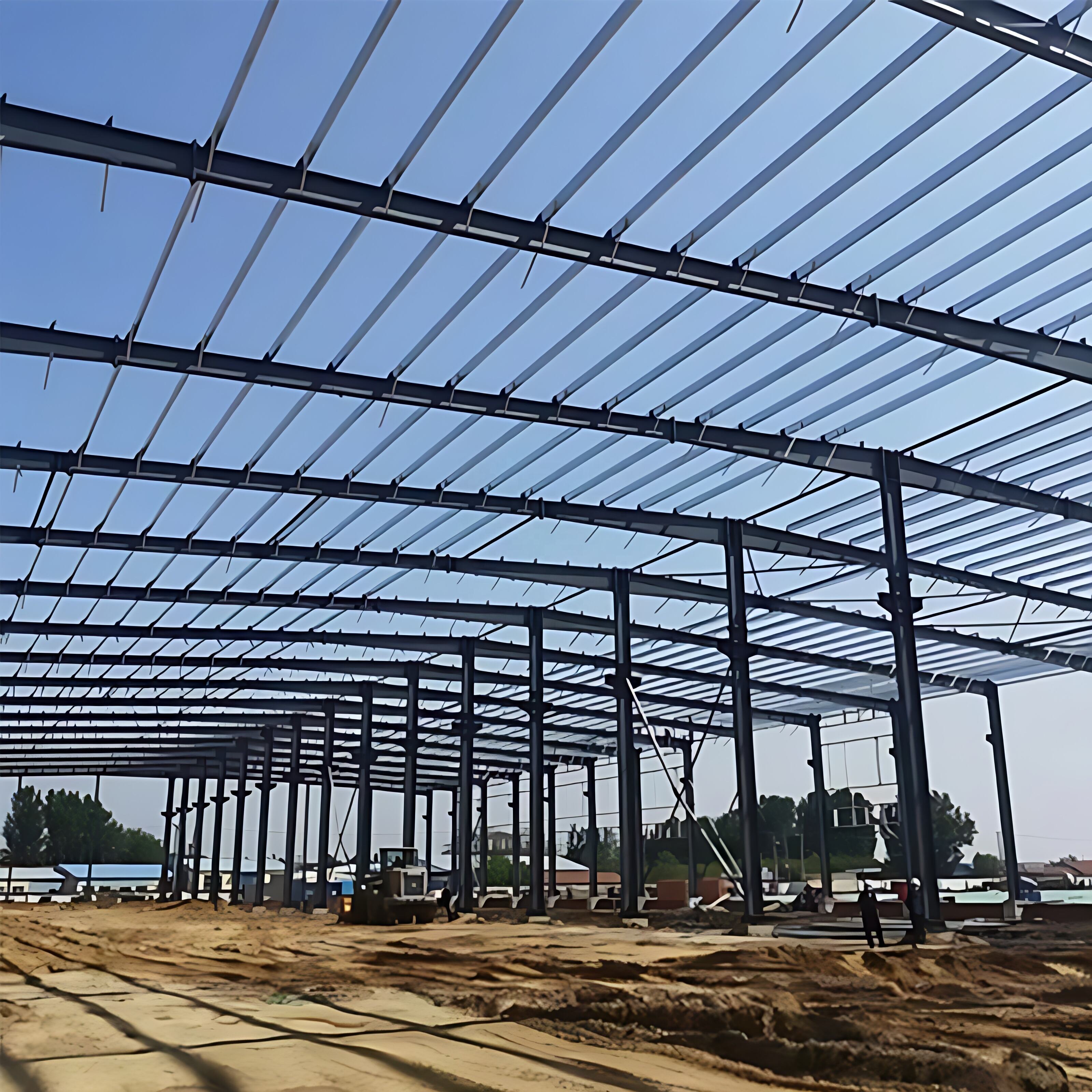Çelik Yapıların Modern İnşaatlardaki Devrimci Etkisi
Çelik yapı inşaatı, modern çağda bina tasarımı ve geliştirilmesine olan yaklaşımı kökten değiştirmiştir. Şehirler büyüdükçe ve inşaat gereksinimleri daha karmaşık hale geldikçe, çelik mimari inovasyonun temel taşı haline gelmiştir. Yükselen gökdelenlerden geniş sanayi tesislerine kadar çelik yapılar, yapı ortamımızı yeniden şekillendiren eşsiz avantajlar sunmaktadır. Çeliğin çok yönlülüğü ve dayanıklılığı, mimarların ve mühendislerin bina tasarımıyla ilgili mümkün olanın sınırlarını zorlamalarını sağlayan vazgeçilmez bir malzeme haline gelmiştir.
Çelik Yapımanın Temel Avantajları
Üstün dayanıklılık ve dayanıklılık
Çelik yapı inşaatı, geleneksel bina malzemelerinin çok ötesinde olan ve yüksek dayanıklılık-ağırlık oranları sunar. Bu doğrudan dayanıklılık, daha büyük açıklıklar ve daha yüksek binalar sağlarken genel olarak daha az malzeme kullanılmasına olanak tanır. Modern çelik yapılar, yapısal bütünlüğü riske etmeden aşırı hava koşullarına, depremsel aktivitelere ve ağır yüklere dayanabilir. Malzemenin dayanıklılığı, binaların onlarca yıl boyunca yapısal sağlamlığını korumasını sağlar ve diğer inşaat malzemelerine kıyasla minimum düzeyde bakım gerektirir.
Çelik yapıların uzun ömürlü olmaları, bina ömrü boyunca önemli ölçüde maliyet tasarrufu sağlar. rutubet veya zararlı böcekler nedeniyle zaman içinde bozulabilen ahşap yapılardan farklı olarak çelik, yapısal özelliklerini uzun süre aynı şekilde korur. Bu güvenilirlik, çelik yapı inşaatını özellikle uzun vadeli performansın kritik olduğu büyük çaplı ticari ve endüstriyel projeler için cazip hale getirir.
Zaman ve Maliyet Verimliliği
Çelik yapı inşasının uygulanması, geleneksel bina yöntemlerine kıyasla projelerin süresini ciddi şekilde kısaltır. Çelik elemanlar genellikle kontrollü koşullar altında saha dışı ortamlarda önceden imal edilir, bu da hassas üretim ve kalite kontrol imkanı sunar. Bu elemanlar inşaat alanına ulaştığında hızlı ve verimli bir şekilde monte edilebilirler. Bu durum, saha içi işçilik maliyetlerini düşürür ve hava koşullarına bağlı gecikmeleri en aza indirger.
Çelikle inşaatın hızı aynı zamanda proje tamamlanmasının erken gerçekleşmesine yol açar ve emlak geliştiricilerin yatırım getirilerini daha çabuk elde etmesini sağlar. Ek olarak, inşaat süresindeki kısalma finansman maliyetlerinin düşmesine ve erken yerleşim potansiyeline olanak sağlar. Çelik imalattaki hassasiyet aynı zamanda malzeme israfını en aza indirger ve genel maliyet verimliliğine katkı sağlar.
Çevresel ve Tasarım Avantajları
Sürdürülebilirlik Özellikleri
Çelik yapı inşaatı, modern sürdürülebilirlik hedeflerine tam olarak uyar. Çelik, en çok geri dönüştürülebilir inşaat malzemelerinden biridir ve temel özelliklerini kaybetmeden birçok kez yeniden kullanılabilir. Çelik üretimi giderek daha verimli hale gelmiştir; üreticiler çevre dostu süreçleri uygulamakta ve karbon emisyonlarını azaltmaktadır.
İnşaatlarda çelik kullanımının yeşil bina sertifikalandırmalarına katkı sağladığı bilinmektedir çünkü uygun şekilde yalıtıldığında mükemmel termal performans sunar. Çelik yapılara, geleneksel inşaat yöntemlerine göre daha kolay enerji verimli özellikler, örneğin güneş panelleri ve yeşil çatılar entegre edilebilir. Malzemenin dayanıklılığı, daha seyrek yenilenme ve tadilat gerektirmesiyle zamanla çevresel etkinin azalmasına da yardımcı olur.
Mimari Esneklik
Çelik yapı sisteminin çok yönlülüğü, mimari tasarımda eşsiz olanaklar sunar. Mimarlar, büyük açık alanlara ve minimum destek kolonlarına sahip cesur, yenilikçi yapılar yaratabilir. Çeliğin dayanıklılığı, diğer malzemelerle gerçekleştirilemeyecek şekilde dramatik çıkmalılar, akıcı eğriler ve geniş yüzeyli pencereler için imkan sağlar.
Çeliğin uyum sağlayabilme özelliği, gelecekte yapılacak değişiklikler ya da genişletmeler için de ideal hale getirir. Binalar, değişen ihtiyaçlara göre kolayca yeniden düzenlenebilir veya genişletilebilir, böylece mülk sahiplerine uzun vadeli esneklik sunar. Malzemenin hassasiyeti ve dayanıklılığı, yapısal bütünlüğü korurken etkileyici mimari detayların oluşturulmasını sağlar.
Güvenlik ve Bakım Düşünceleri
Güçlendirilmiş Bina Güvenliği
Çelik yapı inşaatı, yangın söndürme malzemeleri ile uygun şekilde işlendiğinde üstün yangın direnci sağlar. Modern çelik binalar, hem yapıyı hem de içindekileri koruyacak şekilde tasarlanmış kapsamlı yangın güvenliği sistemlerine sahiptir. Malzemenin yanıcı olmayan yapısı ve stres altındaki davranışının öngörülebilir olması, güvenlik odaklı geliştiricilerin tercih etmesine neden olur.
Çeliğin birleşik kalitesi, bina boyunca tutarlı yapısal performansı da garanti altına alır. Gizli hatalara sahip olabilecek diğer malzemelerin aksine, çeliğin özellikleri montajdan önce detaylı biçimde test edilir ve sertifikalandırılır. Bu güvenilirlik, bina güvenlik standartlarını korumak ve geçerli bina yönetmeliklerine uygunluğu sağlamak açısından hayati öneme sahiptir.

Basitleştirilmiş Bakım Gereksinimleri
Çelik yapılar, diğer inşaat malzemelerine kıyasla minimum düzeyde bakım gerektirir. Uygun başlangıç tedavisi ve periyodik kontroller ile çelik binalar, yapısal bütünlüklerini birkaç on yıl boyunca koruyabilir. Malzemenin hava koşullarına, zararlılara ve çürütmeye karşı direnci, binanın ömrü boyunca bakım maliyetlerini önemli ölçüde düşürür.
Modern koruyucu kaplamalar ve tedaviler, çeliğin dayanıklılığını daha da artırmıştır ve onu korozyona ve çevresel etkilere karşı daha dirençli hale getirmiştir. Düzenli bakım esas olarak görsel kontroller ve koruyucu kaplamaların zaman zaman yeniden uygulanmasını içerir. Bu özellikleri nedeniyle çelik yapı inşaatı, uzun vadeli tesis yönetimi için maliyet açısından etkili bir seçimdir.
Sıkça Sorulan Sorular
Bir çelik yapının ömrü ne kadar olabilir?
Uygun bakım ve koruma ile çelik yapılar kolayca 50-100 yıl veya daha fazla dayanabilir. Dayanıklılık, çevre koşulları, kullanım şekli ve bakım uygulamaları gibi faktörlere bağlıdır ancak çelik binalar genelde diğer inşaat malzemelerine kıyasla olağanüstü bir dayanıklılık sunar.
Çelik yapıların geleneksel inşaat yöntemlerinden daha ekonomik olmasının nedeni nedir?
Çelik yapılar, daha hızlı inşaat süreleri, azaltılmış işçilik maliyetleri, minimum atık, düşük bakım gereksinimleri ve uzun ömürlü olmaları sayesinde maliyet avantajı sağlar. İlk yatırımın yüksek olması bir tarafa, bu faktörler nedeniyle genel yaşam döngüsü maliyetleri genellikle daha düşüktür.
Çelik yapılar tüm inşaat projeleri için uygun mudur?
Çelik yapı inşaatı, ticari, endüstriyel ve yüksek yapılar da dahil olmak üzere birçok uygulamada üstün performans gösterse de her projeye en iyi uygun olmayabilir. İnşaat malzemeleri seçerken bina boyutu, konum, bütçe ve özel gereksinimler gibi faktörlerin dikkate alınması gerekir. Ancak çeliğin çok yönlülüğü, onu çeşitli inşaat uygulamaları için uygun hale getirir.


